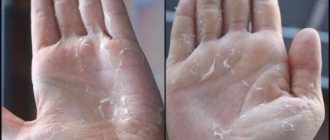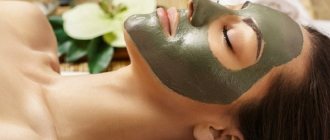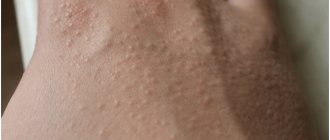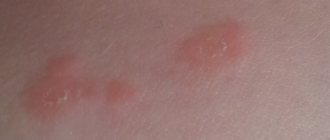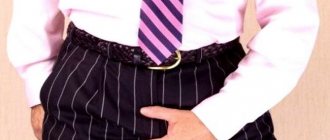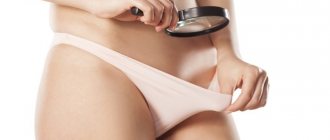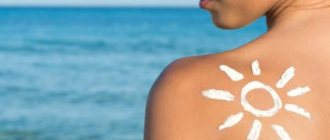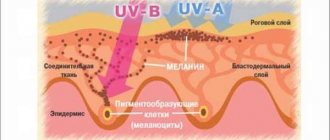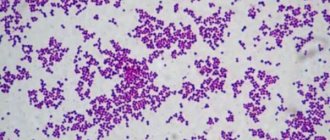Redness of the palms, the causes of which can be very different, has worried the minds of healers, psychics and magicians for many centuries. It is not in vain that fortune tellers of various stripes tried to predict the future based on the state of the palms, realizing that this part of the body can tell about a person’s health.
But one thing is important: such a symptom quite often signals the onset of serious illnesses, so you cannot delay a visit to the doctor. Any disease is much easier to treat if it is diagnosed in a timely manner.
Causes - what kind of disease could this be with red palms?
Sometimes the skin on the palms becomes filled with excess blood and turns red in hot weather, when the high temperature causes the blood pressure in the blood vessels to rise slightly above the optimal level. This is a normal reaction of the body and there is no need to sound the alarm about the changed shade of the skin of the palms. It is much worse if this condition of a part of the upper limbs acquires unhealthy constancy, regardless of the temperature of the environment. In this case, one or another disease of the internal organs can be suspected. People with chronic redness of the epithelial surface of the palms may have the following diseases and pathological conditions of the body:
Allergy
Daily contact with a potential irritant over time forms a stable autoimmune reaction of the body, which is expressed in redness of the palms. This is the primary stage of development of an allergic reaction. It is caused by systematic exposure of the skin of the palms to chemical, medical or cosmetic preparations. To eliminate the allergen, you need to reconsider your lifestyle and remove all possible factors that influence the occurrence of this type of allergy. If the patient does not take any adequate response measures, then redness is subsequently accompanied by symptoms such as itching, the formation of a rash in the area of the hand and wrist, peeling of the affected skin and swelling of the tissues.
Liver diseases
In case of damage to liver tissue as a result of an increased burden of processing toxins, or due to an infectious invasion that provokes inflammation, the skin is the first to signal problems with the health of this part of the digestive system. Most often, a red tint to the epithelial surface of the palms appears if the patient is diagnosed with liver diseases such as cirrhosis, hepatosis, and hepatitis. All of them are successfully treated with medications, but only in the initial stages of the development of the disease.
Avitaminosis
Chronic deficiency of B vitamins, which are directly involved in the formation of the skin, leads to the fact that the palms begin to turn red, the hands become numb and itchy. Over time, the process of keratinization of the epidermis develops and dead cells peel off. In addition to changes in skin tone, a person with vitamin B vitamin deficiency experiences increased fatigue, irritation, and deterioration in the health of nails and hair.
Lane's disease
A genetic disease, inherited, which is characterized by erythema of the skin of the palms with their redness. The main reason for the development of the disease is a violation of the venous circulation of the upper extremities, when the smallest vessels, the capillaries located in the palms, do not fully receive blood supply. As a result of this pathological process, their cellular structure changes and they acquire a purple-blue hue. Because of this, the skin of the palms looks like one solid red spot of rich color. Lane's disease can manifest itself at any age. It is diagnosed both in newborns and in people who are already at a fairly mature age.
These are the main reasons that influence the change in color of the skin of the palms from natural flesh to red shades.
It is possible that if you seek medical help and undergo a diagnostic examination of the body, other factors may be identified that influence the negative reaction of the skin of the hands.
The cause of itching is measles or chickenpox
Measles is most often extremely difficult and painful, but there is one advantage to this disease. You can only get sick with it once, then the body produces antibodies. People only get measles from other people, so it’s worth taking a closer look at your surroundings. The disease is transmitted through saliva and airborne droplets, such as sneezing. Children under 5 years of age most often suffer from measles.
If your child's palms are red and itchy, the cause may be chickenpox. Every child suffers from it, and usually at a young age it is tolerated quite easily.
Treatment - how to get rid of allergies on the palms?
The process of treating an allergic reaction that manifests itself on the palms of the hands consists of the use of traditional medications that belong to the antihistamine group. In the treatment process, the following means are used:
- Tablets Aleron, Ketotifen, Eden, L-cet. Take them orally with the required amount of water. The dosage of each type of drug is different. Some medications need to be taken 2-3 tablets daily, but an allergy medicine such as Aleron is enough to take only 1 tablet per day, but at the same time. The final dosage and timing of therapy is determined by an allergist or therapist if a specialized specialist is not available at the medical institution.
- Suprastin, Suprastinol, Diprospan, Prednisolone, Ruzam. These are intramuscular injections of antihistamines. Intended for the treatment of acute forms of an allergic reaction. Injection therapy by intramuscular administration of the drug is used if taking tablet forms of antiallergic drugs does not bring a positive effect.
- Ointments and creams Epidel, Lanolin, Dropalen, Fluorocort. They are applied directly to the surface of reddened palms. The active components of antihistamine drugs in this category reduce swelling of the epidermal tissues, relieve itching, and prevent the formation of rashes. The use of ointments and creams in the treatment of reddened palms is effective only in complex therapy.
To achieve the most positive result aimed at getting rid of redness of the skin of the palms, it is imperative to identify the allergen that provokes the pathological condition of the epithelium and eliminate it from your usual lifestyle. Only then can you count on a complete cure for allergies.
Why does a child's palms or feet itch?
The resulting discomfort prevents children from sleeping and staying awake. To eliminate itching of the feet and palms, it is necessary to determine the cause. These can be both everyday factors and serious pathologies of various types.
Enterovirus infection
The skin disease is characterized by redness in different parts of the body. The lesion is primarily noticeable on the upper torso and arms. Hyperemia does not protrude above the surface. Sometimes the palms and feet become covered with small blisters, which burst within a week, leaving pigment spots. Over time, the symptoms disappear without a trace.
Allergic diseases
Rashes in a baby, accompanied by severe itching, may be the result of contact with an allergen. This clinical picture is caused by various factors:
- Food. An allergy to any food is possible. First of all, you need to analyze changes in the diet, exclude new foods and observe the reaction. An allergy may also arise from an oversaturation of certain components of dishes that were constantly present on the baby’s menu and were well accepted by the body.
- Medicines. When taking medications, a child’s palms often itch, turn red, and become covered with blisters. You must inform your doctor about this so that he can prescribe a different course of treatment or adjust the therapy by selecting an additional antihistamine.
- External stimuli. In summer, a rash and itching on the palms may occur when picking berries and flowers. Baby's feet become red and itchy after walking on hot sand at the beach or barefoot on the grass. In winter, discomfort remains for several days after the hands or feet are frozen. A common irritant is household chemicals. A child’s feet itch severely if socks or tights are not rinsed well. The discomfort is more noticeable if your feet are sweaty.
- Disturbances in the operation of internal systems. Atopic dermatitis manifests itself as severe itching for no apparent reason. This may be a decrease in immunity, or the occurrence of diseases in a latent form.
If you have chronic itching, you need to undergo a full examination so that your doctor can prescribe treatment to get rid of the underlying cause. Only in this case will the fight against its symptoms be successful.
Fungal infection
If the skin flakes, flakes and itches very much, itching appears between the fingers and throughout the palm and foot, it could be a fungus. When neglected, the skin on the heels cracks. Fungal microorganisms contribute to the accumulation of toxins, which provokes the development of other diseases.
Scabies
Infection with parasites can be identified by severe itching and the presence of paired small nodules. This is the entrance and exit of the scabies mite tunnel that it makes under the skin. The child's palms itch more at night.
Irritation is caused both by the parasites themselves and by their metabolic products. If treatment is not started immediately, the infection will spread throughout the body.
Avitaminosis
The lack of useful components is characterized by increased dryness and itching of the feet and palms. Hands and feet become cold, tongue red and dry.
The most detrimental effect on the baby's condition is a deficiency of B vitamins.
Dyshidrotic eczema and dyshidrosis
The diseases have not been thoroughly studied. Doctors believe that they are provoked by nervous shock, problems with the immune and endocrine systems, excessive sweating, a tendency to allergies, and disruption of the sebaceous glands.
At first, the baby is bothered by strong tingling sensations, and only after a few days watery blisters appear on the palms of the hands and feet.
Other reasons
All body systems in a child are more sensitive than in an adult, so discomfort can be caused by various factors:
- Non-infectious skin diseases are characterized by severe itching. These are psoriasis, eczema, dermatitis. Pathologies are difficult to treat and after remission they can worsen again. Provoking factors are hereditary predisposition, allergies, food poisoning, low immunity.
- The child’s feet and palms are flaky and itchy due to worms. In the absence of other reasons, it is necessary to undergo tests to determine parasites.
- Without accompanying symptoms, palms itch due to lymphatic diseases. This mainly occurs when the number of platelets decreases and blood clotting deteriorates.
The same discomfort is caused by burns, injuries, and insect bites.
Traditional treatment for red palms
Alternative medicine has its own recipes that help remove sudden and chronic redness of the skin of the hands. The following traditional methods are used for this:
Baths from a series
It is believed that this medicinal plant has unique therapeutic properties when the patient has various dermatological diseases. Among the people, baths made from a decoction of the string are perceived as a universal remedy for any dermatitis and allergic manifestations on the skin. To treat with this method, you need to pour 2 liters of boiling water over 30 grams of dried string and close the container in which the medicinal plant is located for infusion.
After the specified time, the broth is poured into a basin. After this, the person steams his hands in a decoction of the string for 20-30 minutes. This procedure must be performed daily in the evening. The duration of treatment is 10 days. During this period, the redness of the palms should completely disappear.
Aloe and honey compresses
To prepare this folk medicine, you will need to take 1 leaf of an aloe flower, wash it thoroughly under running water and twist it through a meat grinder, or grind it in any other convenient mechanical way. The end result should be a paste. The juice should be squeezed out to form a dense green mass. 1 teaspoon of honey is added to it and the gruel is mixed until smooth.
The principle of treatment is that crushed aloe with honey is laid out on a gauze cloth, and then attached to the surface of the red palms in the form of a compress. Medicinal aloe flower in combination with honey has a sustainable anti-inflammatory effect, improves local blood circulation, and relieves swelling. The positive therapeutic result becomes an order of magnitude higher if, in parallel, therapy is carried out for the main cause that provoked the redness of the palms.
Treatment with bile
If the redness of the skin of the palms is caused by liver disease, then folk therapy for this disease is based on the fact that the patient must swallow the gall bladder of a young rooster. This organ of the poultry digestive system is consumed orally in its raw form. In addition, it has a pronounced bitter taste, so it is not recommended to bite into it. It is best to drink it with a glass of cold water. It is believed that after just one procedure, the functioning of the liver tissue will stabilize, and the redness of the palms will completely disappear.
Traditional medicine is very skeptical about these methods of traditional treatment, since their implementation does not require diagnosis and examination of the body. Dermatologists and allergists recommend that patients do not self-treat red palms at home, but seek help only from medical institutions.
Treatment and prevention
To prescribe treatment, you should contact a specialist - only he will be able to choose the remedy that is most suitable for eliminating the symptoms. If you are unable to get an appointment in a short time, it is recommended to use Sinaflan ointment: of all the products presented in pharmacies, only Sinaflan is a relatively harmless, relatively cheap and surprisingly effective drug.
To relieve itching, you should use chamomile baths. Preparing the solution is quite simple - you need to brew a couple of tablespoons of the herb (or bags) and let it brew for a while, after which the decoction can be used to wipe the inflamed area.
Cold water lotions or coconut oil, which has antiseptic properties, can help soothe itching. But it is not advisable to make vodka compresses and lotions from soda solution. Contrary to popular opinion, they do not relieve irritation, but only increase the focus of inflammation, up to the formation of painful hyperemia.
Whatever the cause of itching, the main thing to remember is that self-medication is not a cure. Of course, it will be difficult to harm a child, but choosing the wrong drug or vitamin complex can significantly delay treatment and cause even more problems, so do not delay your visit to the doctor.
Source: ZudMed.ru
Prevention of red palms
In order for the skin of the palms to maintain its usual and healthy flesh color, it is necessary to observe daily preventive measures, which include the following:
- a balanced diet that contains only biologically healthy products containing sufficient amounts of vitamins, minerals, amino acids, proteins and complex carbohydrates (chicken meat, ocean fish, eggs, fresh vegetables and fruits, cereals, herbs, dairy products);
- refusal to drink alcohol, smoke tobacco and other harmful habits, the presence of which systematically reduces the protective function of the immune system and negatively affects skin health;
- use of protective gloves when working with chemicals and cosmetics;
- regular preventive medical examinations by a dermatologist.
Following these simple rules will help preserve the natural color of the skin of the palms and prevent allergic redness or changes in the color of the epithelium under the influence of other factors.
The human body is designed in such a way that small deviations from the generally accepted norm may indicate the development of diseases. Timely diagnosis in many cases helps to avoid serious consequences, so doctors recommend monitoring your health and paying attention to any changes.
Even red palms of the hands can be a sign of heart disease or the development of allergies.
Treatment methods
To relieve itching, redness and pain in the palms and legs, symptomatic therapy in the form of external medications is used. Oral or injection medications are used extremely rarely in the treatment of children.
In addition, it is prohibited to carry out water procedures with soap or other hygiene products. This is especially true for frequently recurrent cases.
Herbal baths will help relieve itching on your child’s palms and soles.
The following methods will help cope with itching in your baby:
- special ointments, gels and other external preparations;
- baths with herbal infusions (chamomile, oak, string);
- normalization of the psycho-emotional atmosphere between household members, especially if the disease appears due to stress;
- walks in the fresh air in the shade;
- if the limbs itch due to allergies, irritants are excluded; it is also recommended to temporarily give up eggs, citrus fruits, honey, and sweets;
- ventilation and wet cleaning of the house;
- for fungal infections of the feet, antimycotic sprays are prescribed - fatty ointments contribute to the greenhouse effect and the inflammatory process;
- bacterial rash is treated with creams that contain an antibiotic;
- anti-parasite ointment is used for scabies;
- for severe itching of any nature, the pediatrician may prescribe an antihistamine or sedative;
- to reduce the permeability of the vascular membranes, speed up the healing process and normalize hormonal levels, it is recommended to take vitamins E and A;
- sometimes physiotherapy is used (laser, cryotherapy, paraffin therapy, ultraviolet light, the use of magnetic waves or high-frequency current).
Palms
A number of popular effective remedies:
- Dexpanthenol;
- Fenistil;
- Sinaflan;
- Bepanten;
- Fukortsin;
- Syntomycin emulsion;
- Nizoral;
- Ketoconazole;
- Solcoseryl;
- Suprastin;
- Advantan;
- Elokom;
- Triderm;
- Radevit;
- Lorinden S;
- Lokoid;
- valerian extract.
Feet
For a child's feet, emollient ointments are considered a suitable option - they do not penetrate deep into the skin. For mechanical or thermal damage to the skin, antiseptic, anti-inflammatory and desensitizing drugs are used. Names of effective remedies for itchy feet:
- Soventol;
- Mustela;
- Rescuer;
- Boromenthol;
- Fenistil gel;
- Oxycort;
- Bepanten;
- Iricart;
- Nezulin;
- Lamisin;
- Nizoral.
Physiological causes of red palms
The skin on the palms is highly sensitive.
Redness of this zone can occur for a number of objective reasons:
- sudden changes in temperature (palms may turn red during a too hot day or signal freezing or chapping);
- burns (this includes household burns from electrical appliances or chemical burns using special means);
- the effect of creams, powders, ointments (slight redness, which cannot be diagnosed as an allergy, can be caused by substances in low-quality products).
Safe causes of redness of the skin of the palms also include changes during sports or changes under the influence of physical activity. This may be due to the overflow of blood in the vessels of the palms at a time when physical pressure is especially concentrated in these areas.
Causes of red palms that need treatment
Whether red palms are a sign of illness or not depends on the accompanying symptoms. There may be several reasons for intense redness.
Allergy
First of all, a change in the shade of the skin is considered an allergic reaction.
In addition to redness, the development of allergies is indicated by accompanying symptoms:
- the appearance of itching;
- the appearance of bubbles at the edges of the spots;
- roughness of spots;
- peeling of the skin.
Redness due to allergies, as a rule, is focal. Small spots cover not only the inside of the palm, but also the outside.
Liver diseases
Often, redness of the palms indicates the development of liver failure or cirrhosis. There is a special term for this sign: “liver palms.” Redness is accompanied by itching and a feeling of heat. At the same time, the development of liver diseases is indicated by the absolutely symmetrical appearance of reddish spots on both hands.
Hypovitaminosis
The appearance of red spots indicates the development of a deficiency of B vitamins. It can become chronic. Vitamins are constant participants in the process of skin formation at the cellular level.
A sign of vitamin B deficiency is redness of the palms of the hands. To make up for the deficiency, you need to introduce foods from the table into your diet
If the nutrients entering the body are not enough, a reaction will begin, which indicates the impossibility of fully completing the formation of the epidermis.
The appearance of red spots on the inner and outer sides of the palms is accompanied by additional symptoms:
- increased fatigue, irritability, weakness;
- peeling of the top layer of skin on the palms, elbows, feet;
- change in complexion;
- detachment of nail plates;
- deterioration in the appearance of hair.
Lane's disease
Hereditary diseases can also cause changes in skin color. Lane's disease is a genetic pathology most often called palmar erythema. It manifests itself due to abnormal expansion of capillaries on the palms.
This occurs due to disruption of venous blood flow. Lane's disease is determined by redness of the palms only at an early stage; in subsequent stages, the skin of the hands acquires a pronounced shade, the redness becomes dark burgundy or bluish.
Palms will tell about liver and heart diseases
One of the most dangerous causes of red palms is liver disease. It is not for nothing that red palms are sometimes called liver palms, since this sign is considered an indicator of toxic liver damage.
Redness may be due to the fact that the liver cannot cope with toxins in the form of alcohol, foods, toxic substances entering it from the outside, or those toxins that are produced during inflammatory reactions within the body. Very often this is facilitated by severe alcohol poisoning. Hepatic palms may indicate the development of dangerous diseases such as cirrhosis, hepatitis, hepatosis, etc. In the case of liver diseases, palmar erythema is not accompanied by pain even with pressure. However, such a symptom of the disease appears already in the later stages of the pathology, accompanied by such symptoms as nausea, vomiting, pain in the hypochondrium, and abnormal changes in stool.
The causes of erythema of the palms can be from a number of other pathologies. If the functioning of the heart muscle is impaired or vascular tone is reduced during attacks, red dots may appear on the palms. Something similar occurs in people with vegetative-vascular dystonia. Redness complements symptoms such as dizziness, weakness, and pain.
Erythema also accompanies other dangerous diseases: diabetes, tuberculosis, hypothyroidism, etc. All this suggests that redness of the palms can be a symptom of a variety of pathologies, and if pigmentation persists for a long time, you should consult a dermatologist.
Red palms of the hands are an indicator of a person’s health status and in most cases change their natural flesh color to brighter tones due to an allergic reaction of the skin to one or another external irritant that a person encounters every day due to certain circumstances. If the allergy is not diagnosed and there are no accompanying signs of skin irritation in the form of itching, rash and swelling of the epidermal tissues, then it is possible that red palms of the hands signal a disease of the internal organs. Let us consider in more detail in what pathological cases the color of the skin of the palms of the hands suddenly changes, as well as what diseases this may be associated with.
Necessary diagnostics from specialized doctors and tests
Systematic redness of the skin on the palms is significantly different from redness for physiological reasons. Such processes are a reason to visit a doctor and undergo a diagnosis. As a rule, a visit to the hospital begins with an appointment with a therapist, who decides which specialist is needed in this case.
Examination by an allergist and dermatologist
An allergist can diagnose the development of allergic reactions.
To make a correct diagnosis, a comprehensive examination is carried out:
- general blood and urine tests;
- allergy tests taking into account the information given by the patient.
Allergy testing is a method that helps identify the allergen that caused the development of the disease. If there are additional symptoms, for example, changes in the skin in other parts of the body, as well as the lack of information as a result of receiving the results of an allergy test, an examination is carried out by a dermatologist.
He studies the condition of the skin, is able to analyze the possible causes of redness and conduct his own examination, which includes:
- detailed examination of the skin and mucous membranes;
- scraping from the skin for microscopy of the fungus;
- scraping for PCR analysis;
- biochemical and immunological blood test;
- inoculating the pathological area with bacterial foci.
Hepatologist
If the therapist suspects that redness of the palms has become a sign of the development of liver disease, the patient will be referred to a doctor - a hepatologist who diagnoses liver disease.
The examination includes:
- performing liver tests;
- Ultrasound of the liver and gallbladder;
- blood test for cholesterol levels;
- Ultrasound or MRI of the abdominal organs;
- lipid profile test.
Phlebologist, angiologist
If the reasons have not been identified, the patient can contact a phlebologist or angiologist. They deal with the diagnosis and treatment of diseases of small blood vessels, as well as disorders of venous blood flow.
As a result of the examination, the speed of blood flow is assessed, and a search is made for areas where it may be disrupted. The main measures that help diagnose diseases are vascular ultrasound or detailed MRI.
Red palms of the hands are a sign of a serious illness associated with heart or liver disease. It is treated according to a specialist regimen using drug therapy. If necessary, surgical interventions are performed.
If problems develop with the blood flow of capillaries or impaired outflow of venous blood, which cause redness of the palms, the phlebologist prescribes special treatment. It can take place on an outpatient or inpatient basis.
Diagnostic methods
At the moment, doctors have a huge variety of diagnostic methods to find out the reasons why a child’s palms itch. In the age of current technology, these procedures are absolutely (or almost) painless.
In order for a doctor to be able to determine the type of disease in a child and find out the cause, he needs indicators such as:
- blood test results (for hormones and general);
- urine test (for hormones and general);
- microflora analysis indicators (scraping);
- results of a thyroid test (to check the child’s hormonal levels);
- stool analysis indicators (detect worms and internal problems, which can also be associated with itching).
The child also needs to be tested for allergens. Occasionally, the baby is tested for HIV or syphilis. In order to exclude the possibility of pathologies, an ultrasound scan is performed in the chest area.
The most common and simplest way to get rid of allergies is vaccination. Usually the vaccine is given once for six months or a year. The effectiveness of such procedures is very high. The vaccine is used in case of acute allergies.
How to treat redness on the hands with drugs in children
Red palms of the hands are a sign of allergies in children. Every mother needs to remember this in order to diagnose the disease at an early age.
Children are prescribed treatment, which includes compliance with several rules. Based on the results of allergy tests, the doctor prescribes a detailed hypoallergenic diet. At this stage, the child’s immunity is weakened, so parents are advised to eliminate additional objects that can cause allergies.
These include pets and household chemicals with a strong odor. It is recommended to wash children's clothes with laundry soap or special detergents without adding fragrances. The child's diet becomes the same. This is necessary in order to prevent relapse during treatment.
Drug therapy is divided into 3 types:
- Antihistamines. They block the release of histamine, extinguish the allergic reaction, and remove the main causes that cause redness on the palms. For children, drugs are chosen that do not have side effects. These include Zyrtec drops, the dosage depends on age and specialist recommendations.
- Enterosorbents. Drugs that bind and remove toxins from the child’s body. Enterosgel and Polysorb are considered the most popular and safe. Enterosgel is produced in the form of a paste. The drug Polysorb is a suspension. It is diluted with water and taken depending on the age of the child.
- Local remedies. These are creams, gels or ointments that are used to treat the palms. They can relieve not only redness, but also relieve itching and flaking. Fenistil-gel is a product that has a mild cooling and antipruritic effect. Bepanten cream or ointment, a product that softens the skin of the palms, eliminates peeling and redness.
How to eliminate itching on your child's feet and palms
The injured area should be treated with antiseptics: hydrogen peroxide, a weak solution of potassium permanganate, Miramistin.
Then a thin layer of wound healing ointment is applied: Bepanten, D-Panthenol, Dexpanthenol, Actovegin, Solcoseryl.
The presence of the disease requires individually selected treatment. The course is prescribed by the doctor after a complete examination of the patient and diagnosis.
To view the table from your phone, flip the screen.
| Pathology | Treatment |
| Enterovirus infection | Drinking plenty of fluids is recommended. At high temperatures, Ibuprofen and Paracetamol are prescribed. The doctor selects the main medicine depending on the type of virus. These can be enterosorbents, steroids, immunomodulators. |
| Allergy | Fenistil, Erius, Alerzin, Eden, Claritin, Zodak, Loratadine, Diazolin will help suppress symptoms. |
| Fungal infection | In the morning, disinfection is prescribed with a 2% iodine solution, in the evening - with ointments. These can be antibacterial: Zinc, Sulfur, Salicylic; antimycotic: Ketoconazole, Clotrimazole, Exoderil; broad spectrum of action: Triderm, Lamisil. |
| Scabies | Benzyl benzoate and Spregal have a detrimental effect on the tick and its larvae. |
| Dyshidrosis | Some children benefit from Zinc ointment and Zinc naphthalan paste. If a stronger remedy is needed, Laticort, Lokoid, Resorcinol, Fluorocort, Polcortoron are prescribed. |
| Avitaminosis | If a child’s feet or palms itch due to a lack of useful elements, it is necessary to compensate for their deficiency by taking vitamin-mineral complexes. |
Medicines to treat red palms in adults
In adults, treatment will be different. To relieve symptoms, more concentrated antiallergic drugs are used. These are Aleron, Eden tablets, they are taken in accordance with the prescribed regimen. In severe stages of the disease, antihistamine drugs are administered intramuscularly, these are solutions of Suprastin, Prednisolone, Ruzam.
Hormonal ointments are used as local remedies; they reduce swelling, prevent itching, and block the spread of skin rashes. Ointments and creams are one of the components of general therapy; Lanolin, Fluorocort, Epidel are used for treatment.
Traditional treatment for red palms
The effects of traditional medicine recipes should not be underestimated; this is an integral part of complex therapy. Traditional medicine can help eliminate symptoms and alleviate the patient's condition.
Baths from a series
The string is a unique herbal component that helps in the treatment of various dermatological diseases. To prepare the composition, take 2 liters of water and 50 g of dried string. The mixture is kept on medium heat for 25 minutes, then covered with a lid and left for 30 minutes. The mixture is filtered and cooled to a comfortable temperature.
Palms are immersed in water and kept for 20-30 minutes. Palm baths are done daily in the evening. The course of treatment lasts 10-15 days. The method significantly reduces the feeling of itching, eliminates peeling and prevents the development of infection inside the papules.
Video about the causes of red palms
Elena Malysheva will talk about pathologies associated with skin changes on the palms:
The color of a person’s palms is an indicator of his health, therefore, in cases of an allergic reaction to a certain irritant, they can change their usual flesh tone to red. But if an allergy has not been identified, but the palms still turn red, itch, or develop a rash and swelling, this indicates that there are other diseases of the internal organs.
Sometimes the surface of the skin of the hands (including the palms) becomes filled with excess blood due to high blood pressure, which, in turn, can be caused by hot weather. This is a natural reaction of the body, so in this case there is no need to panic. But if such a condition occurs regardless of weather conditions, then there is cause for concern. The fact is that in this case one can suspect a certain internal disease.
Causes of palms turning red
If we are talking about hot weather, then in this case a larger volume of blood may flow to the hands. In this case, they become hotter and may begin to itch. Such symptoms are a completely normal reaction of the body, so there is no point in panicking.
However, if redness and itching appears under conditions of normal ambient temperature, then in this case the situation changes radically. Then you can suspect a wide variety of pathologies that require timely treatment. But those who are faced with this problem not for the first time need to be more careful. Perhaps we are talking about pathological and chronic pathologies.
Reasons for appearance
Allergy
The most common cause of redness of the palms or the appearance of a rash on them is an allergic reaction of the body. Allergic factors in this situation may include household chemicals or cosmetics, as well as medications and products. In a situation of weakened immunity, the addition of these factors can cause the development of chronic eczema. Then the following symptoms may accompany the redness and rash on the skin:
- itching;
- severe burning sensation;
- dryness and peeling of the palms;
- rash in the form of blisters.
Sick liver
The presence of palms in a state of redness for a long time may indicate that a person has liver disease. Most often, in this case, the liver may not be able to cope with the processing of toxins that enter the body along with alcohol and junk food. Redness can also indicate cirrhosis, hepatitis or other liver ailments. In this case, the following symptoms will appear:
- nausea;
- painful sensations in the right hypochondrium;
- stool changes.
Hypovitaminosis
Reddened palms, which are accompanied by a feeling of numbness or “burning,” can be caused by a lack of vitamin B in the body. The following symptoms can also alert a person:
- severe irritability;
- high fatigue;
- brittle nails;
- excessive hair loss.
Lane's disease
If red rashes in the form of small dots and their clusters begin to appear on the palms, as well as the inner surface of the fingers, and there is no pain or sweating, such symptoms may indicate Lana’s disease. These same signs can clearly appear on the surface of the feet. In some cases, with this disease, the spots may change their color and begin to itch.
Psoriasis
Palmar psoriasis is another disease that causes redness of the palms. They may develop papules or rounded plaques with scales that itch very much. Often such skin manifestations can occur in other parts of the body.
The cause of itching is a fungus or lack of vitamins
The fungus can only appear if the baby has been in contact with another sick person. If this is not possible, there is nothing to worry about. And in any case, the fungus is diagnosed and treated quite simply and painlessly. It is expressed in darkening of the nails and skin, and in advanced cases, the skin on the heels can crack, causing pain to the child.
Irritation may occur due to vitamin B2 deficiency. With its deficiency, psoriasis and seizures can develop. At the slightest suspicion of a lack of vitamin B2, you need to go to a doctor who will prescribe a diet for your child.
Folk remedies
Folk remedies also offer several recipes that will help you quickly cope with acute or chronic redness of the palms. For this purpose, the following traditional methods can be used:
Baths from a series
Pour 2 liters of boiling water over 30 grams of dried string, then close the container and let the product brew. After an hour, the broth is poured into a basin, where the person steams his hands for 20-30 minutes. This procedure should be repeated every day in the evenings. Treatment should last 10 days.
Aloe and honey compresses
To prepare this effective folk remedy, you will need to take 1 leaf of an aloe flower, rinse it well under running water, and then grind it in a meat grinder, or grind it in any other way. As a result, a paste of aloe should form. The juice is squeezed out until green mass is formed. Add 1 teaspoon of honey there, and then mix the composition thoroughly. The product is spread on clean gauze and then carefully attached to the palms in the form of a compress. This remedy will quickly and reliably relieve inflammation and swelling of the hands, and also improve blood circulation in the palms.
Treatment and prevention
In order for therapy to have an effect, it must first be prescribed by a doctor. After all, treatment at home is a very dangerous activity, especially without an accurate diagnosis.
There are several folk remedies that are unlikely to make things worse. A bath with chamomile tincture will help in the treatment.
In order to prepare the infusion, you will need dried chamomile, which is sold at the pharmacy. It needs to be brewed in a teapot (2-3 tablespoons per 1 liter of water), let stand, pour into a basin and wipe the infected areas with warm water. This tincture can be combined with oak bark or herb.
Lotions or baths of celandine and St. John's wort will relieve inflammation.
You can also use coconut oil as a disinfectant and soothing agent against inflammation and discomfort. Sometimes used after treatment to relieve residual symptoms.
Soda lotions are considered bad because they can cause an even more acute response from the body.
If the itching area is slightly swollen, you can apply a few quick ice compresses or wipe with a damp, cold cloth. But you can’t get carried away with this procedure all the time; the child may get sick.
Temporary help can be provided to a child using Sinaflan ointment. It is not only very economical, but also effective. In case of leg disease, the baby is most often prescribed drugs such as Nizoral or Mikozolon. In other cases, doctors use one or two of the following drugs: Lokoim, Celederm, Akriderm, Flucinar.
If the cause of inflammation in a child is stress, you need to try to calm him down, buy his favorite sweets, give him tea or valerian to drink, talk and provide psychological help.
During treatment, doctors prohibit children from eating large quantities of sweets, especially honey and chocolate. Spicy meat, eggs, and various seafood are also prohibited.
